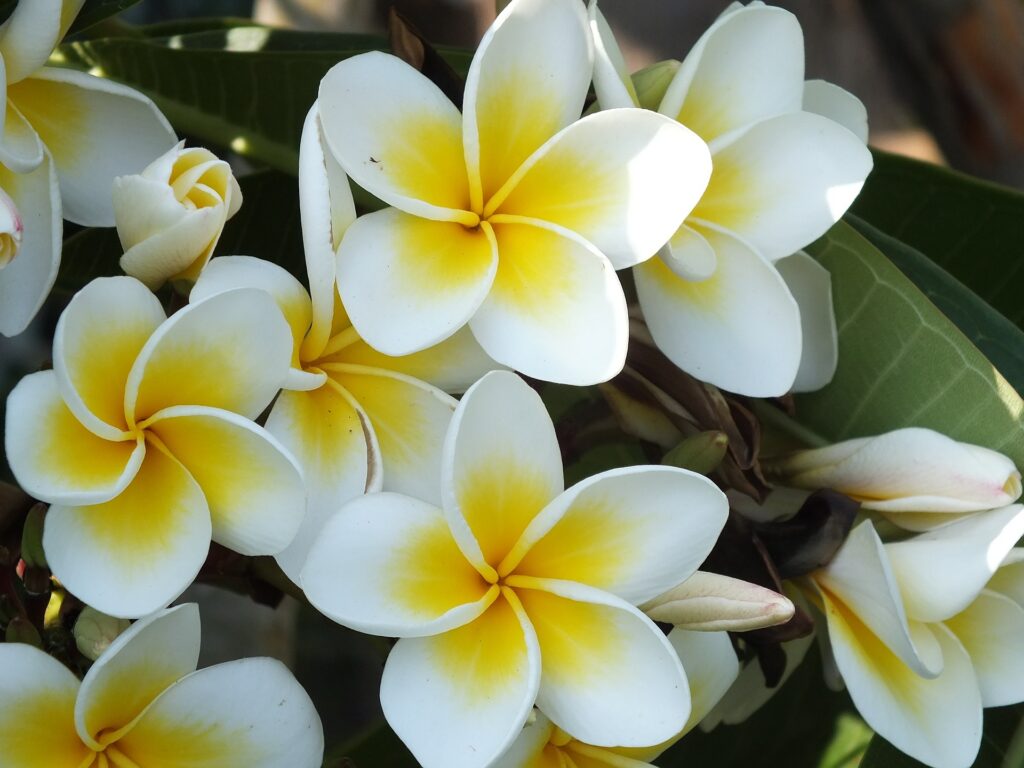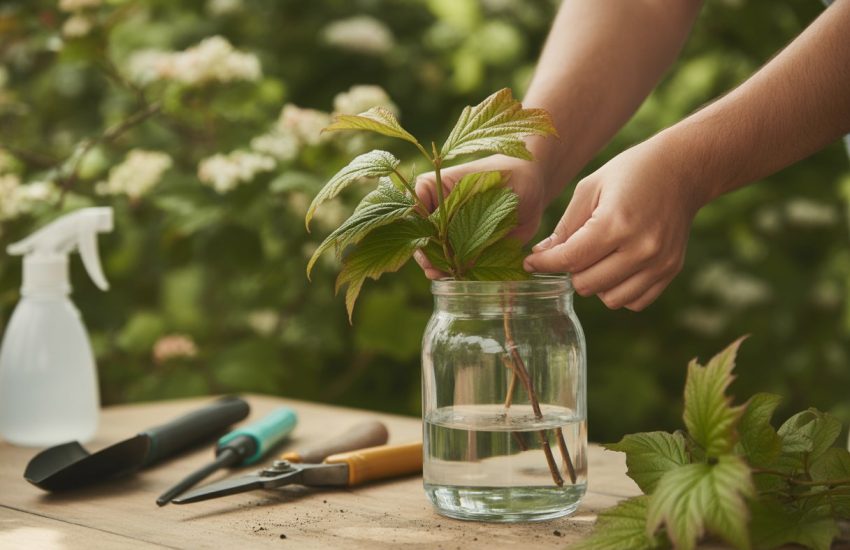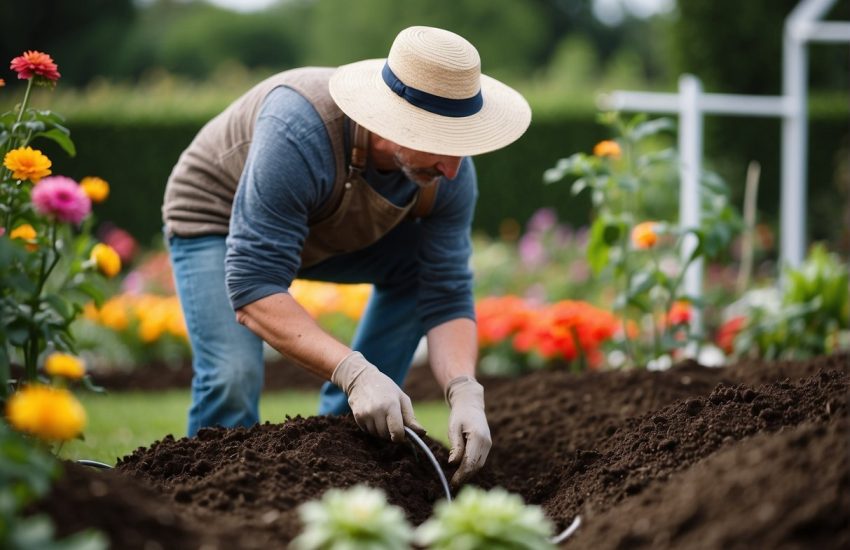Plumeria: How To Plant, Grow And Care
Plumeria alba, commonly known as the frangipani, or Hawaiian lei flower, has become a popular plant in recent years due to its sweet smell and soft appearance. This plant looks best in tropical climates and will grow well if you can provide it with the right conditions. Here are some tips on how to grow Plumeria alba and care for this fragrant flower in your home.

What does plumeria look like?
Plumeria is a tropical flowering tree that produces white or yellow flowers. The flowers are fragrant, so they make an excellent addition to any garden. They can be grown as a bush in the ground or as a container plant on your porch. It’s important to give your plumeria plenty of sunlight and water, but only during dry periods. If you live in a humid area, it’s important not to overwater your plant because it may produce a fungus that will rot the roots of your beautiful flower.
Selecting a plumeria plant
A plumeria is a small flowering tree with long, fragrant stems. The flowers are often called frangipani, but they are not related to the other plants in that family (which includes the Easter lily). If you’re looking for a beautiful flowering plant that will add a touch of fragrance to your home or garden, consider growing plumeria.
Plumeria is native to the tropical Americas. It grows in hot regions like Mexico and Hawaii. There are at least 25 different species of plumeria; it’s not clear how many of these grow around the world because many species have only been found in certain regions. If you live in a colder climate where summer nights stay above 50 degrees Fahrenheit (10 degrees Celsius), then you can grow plumeria outdoors in full sun.
Soil requirements for plumeria
Plumeria prefers soil that drains well, is light in color, and has a pH level of 6.5-7.5. They also like soil that is loamy or sandy, but not clay-like or too rich in organic materials. Plant your plumeria in good potting soil or garden soil mixed with compost. You can also add perlite, pumice, sand, or gravel as needed to help improve drainage and aeration of the soil surface.
Water requirements for plumeria
Plumeria plants are very easy to care for, but they do require regular watering. They prefer moist soil, so make sure you water them regularly. A good rule of thumb is to make sure the soil always feels damp when you touch it. If it feels dry, then you should give it a drink!
Make sure your plumeria is in an area with plenty of natural light as this will help promote strong blooming. Keep your plant away from direct sunlight during the hottest hours of the day (10 am – 2 pm), especially if you live in a hot climate. And while they don’t need any special fertilizer or soil type, they do need some help from time to time with pest control.
Fertilizing requirements for plumeria
Fertilizing your plumeria is important because it will supply the plant with the nutrients needed to grow properly. For this type of plant, a good rule of thumb is that if you’re growing in a pot, you should fertilize once every three months; otherwise, you should fertilize every six months. You want to make sure that you are using organic fertilizer for this task.
Plant care tips (light, pruning)
Plumeria is a tropical plant and requires a fair amount of light. The lighter, the better. Though they can survive in less-than-ideal conditions, they will not thrive without good care. Pruning may be necessary in order to keep the plant in its best shape.
Fertilizing should be done monthly with a general-purpose fertilizer diluted according to the directions on the label. When planting your plumeria in your yard, place them where they will get plenty of sunlight. When watering your plumeria use warm water and allow it to soak into the soil below the plant’s roots.
See Also: Tomato Farming Plant, Grow, Care
4 Steps for Growing Plumeria
A straightforward cutting from the tree makes it simple to propagate a plumeria.
Step 1: Take a cutting: Take a branch, about 12 inches long, off the plumeria tree.
Step 2: Let the cut callus: After severing your branch from the main tree, give it at least a week to dry up and become tough.
Step 3: Plant the cutting: Decide on a location that will receive full or partial sun, and then mix perlite and potting soil in a pot or in your backyard garden. Plant in the ground approximately halfway up the branch after dipping the cut end in a hormone that promotes roots.
Step 4: Water and allow to dry: After planting the cutting, water it and allow it to air dry for at least a week. Water sparingly and irregularly. In a few months, your cutting ought to start growing roots.
How to Plant and Grow Plumeria Trees
Despite being a tropical plant, plumeria trees may be grown in different areas with the correct conditions:
1. Decide where to put your plumeria in your garden. They need full sun or some shade. Due to their low cold tolerance, you might think about planting your plumeria in a container with drainage holes so you may bring it indoors during the winter.
2. Plant in warm weather: Ideally, you should plant your plumeria in the early spring or another warm period of the growing season.
3. Make the soil ready: Select a potting medium with perlite and sand that drains well and is somewhat acidic, such as a cactus potting mix.
4. Plant the plumeria: To plant the plumeria tree, create a hole that is both deep and broad enough to accommodate the root ball. Make sure the root ball is level with the dirt.
5. Fill the hole and smooth the dirt; then, cover and water. Water to keep the soil wet but not soggy.
Conclusion
Plumeria plants make great gifts due to their tropical appeal. They can be grown indoors or outside. Remove dead flowers and cut off brown leaves. Putting it into a pot can help it to grow, which is why many people plant them in pots.
Plumerias are very easy to grow and maintain, so you don’t have to worry much about them.
FAQS
What does plumeria smell like?
Plumeria plants are known for their sweet, delicate fragrance. Some people say it smells like vanilla or pineapple, but what does plumeria smell like to you? The most common variety is called the plumeria alba because of its white flowers. These flowers can also be yellow, pink, or red in color depending on the variety.
Is there an alternative to dried flowers?
Plumeria flowers are often dried, but they make a beautiful fresh addition to arrangements. Plumerias grow well in pots, so you can bring them inside for the winter or keep them outdoors year-round. To care for your plumeria plant, water it well during the growing season (spring through fall) and fertilize every two weeks with a liquid fertilizer mixed according to package directions. You should also consider applying an insecticide as needed against aphids or other pests. Dried plumeria flowers are also available.
Why is my plumeria turning brown?
When a plumeria starts to turn brown, it may be because of a lack of water and nutrients or even stress. Make sure you provide the plant with plenty of water and fertilizer. It is also possible that your plant is too young, so wait until it matures before attempting to move it indoors for the winter. If you are growing in an area where there are a lot of cold nights, wait until late fall or early winter to move your plumeria inside.
What are the best pots for plumeria?
Plumeria trees can be planted in a variety of containers—cactus pots, hanging baskets, and planter boxes are all popular choices, as well as hanging baskets. Make sure that your pot does not dry out. If the soil from a cactus pot is removed, it should be replaced with fresh cactus soil or peat moss. The best soil for plumeria trees is either perlite or a mix of perlite and sand. Gently firm the soil around the plant’s roots to prevent injuries from rot or roots growing into your container. Water when the top inch of soil feels dry to the touch.


